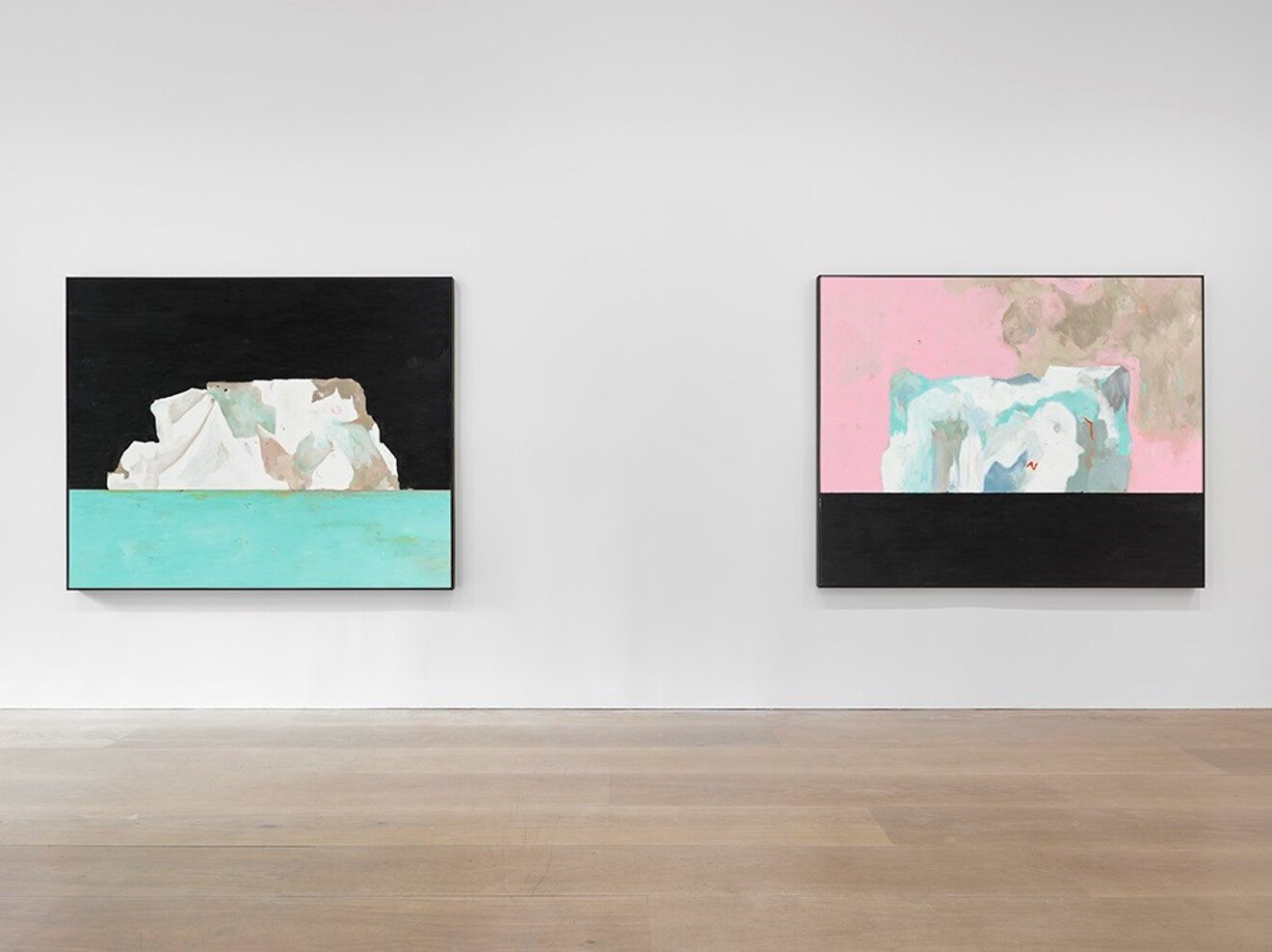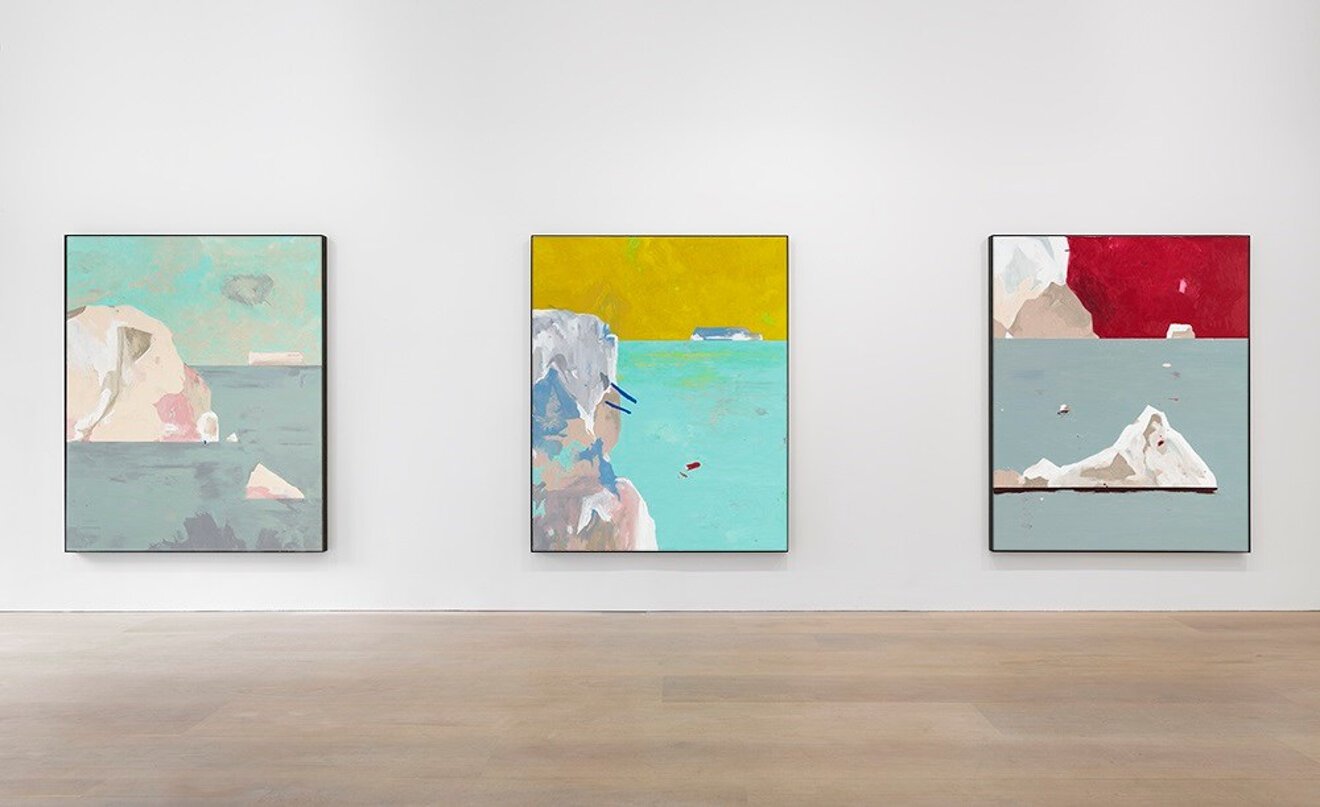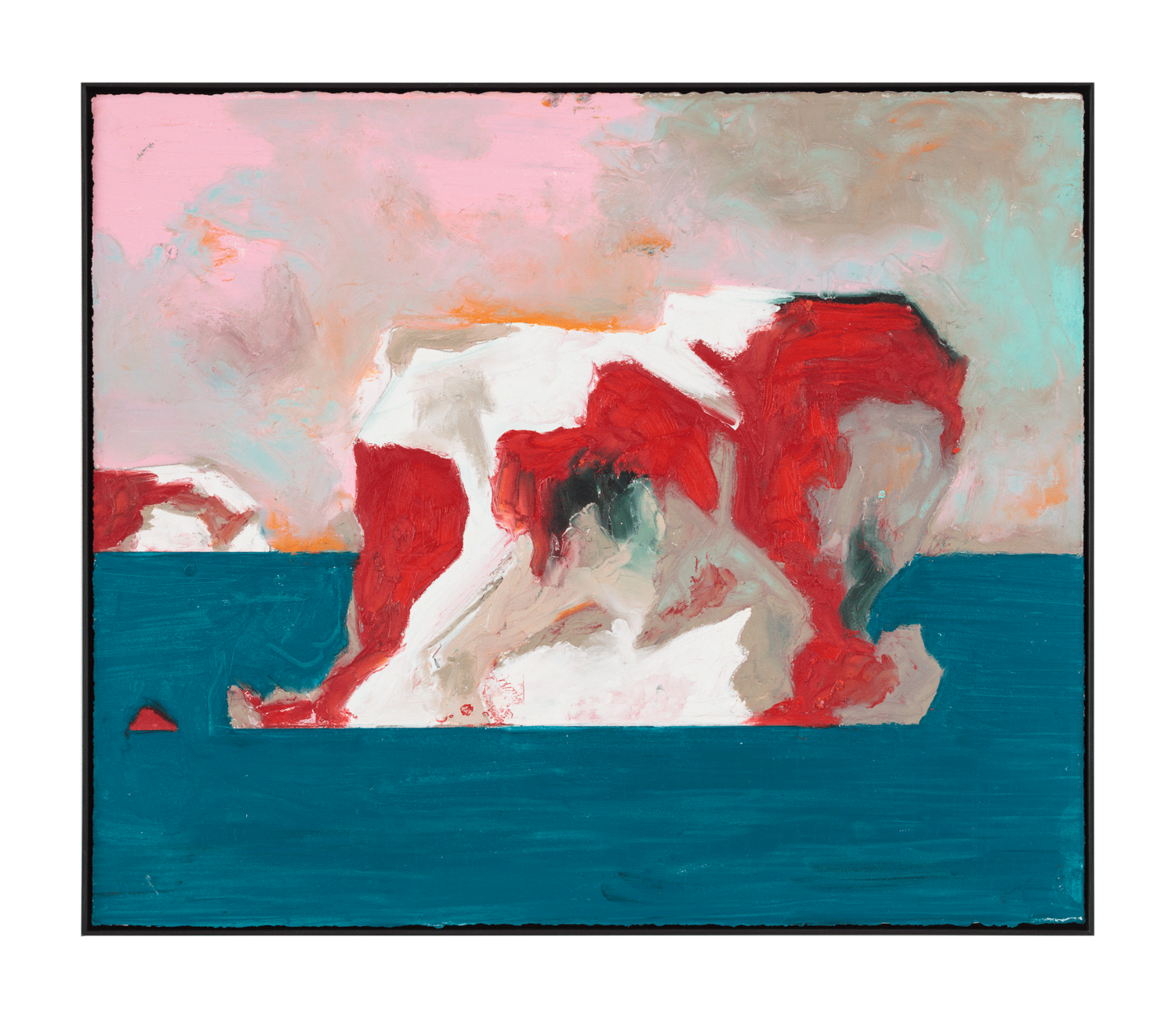Icebergs, Glaciers, and Shipwrecks
July 13, 2021
I saw Alexis Rockman speak at Anderson Ranch the other day. I don’t love his paintings, but I do love what he does. It’s very clear he’s an excellent painter, technically. He’s also tirelessly dedicated to calling out environmental injustice through his epically scaled work, and beyond that, he’s a gifted public speaker — relatable and comfortable, yet deeply knowledgable. His 2004 work, Manifest Destiny, an 8 by 24 foot canvas that shows a submerged, post-apocalypse New York City is certainly prescient, and probably more relevant than ever:
So I can appreciate his worldview, and I’m super happy to know that he and his work exist. As Jerry Saltz says, “make work for the present.” Rockman’s newest body of work is based on shipwrecks. It’s not a literal commentary on the environment compared to his previous work, but the lines drawn between an angry ocean that sinks ships and the fate of humanity are short and straight.
I have certainly thought many times about how to make work that makes a difference. Much of the artwork I make is centered around the natural landscape and how humans intervene and interact with it. I remember the first work I made in this vein — it started with a triptych of ruggedly glaciated terrain in the Alps, which I shot (on film) in 2004, while I was driving around Europe in a Volkswagen camper:
Glamos (Glacier Monitoring of Swizterland) is an organization that tracks the size of glaciers throughout the Valais region. According to Glamos, the Gorner Glacier is the second largest glacier in Switzerland, and in the last century, has decreased in length by almost 3000m. Since I stood on the overlook in Zermatt with my camera in 2004, the glacier in this image has retreated dramatically:
I’m reminded of these iceberg paintings by Harold Ancart, some of my favorite paintings that I have seen recently. For me, the paintings are beautiful and calming, but ultimately super sad and tragic. We all know (or at least those of us that believe in science know) that the icebergs are melting. All the ice is melting, and it’s not coming back. For me, these are paintings of greed, consumption, death, and inevitable extinction.
I wonder about Alexis Rockman and Harold Ancart, or any other artist that makes environmentally themed work. Do they expect their art to make a difference on its own? Is it enough to make a picture and put it out into the world, or does it require some other, more active component of engagement to truly effect change?
Is art, on its own, enough?




